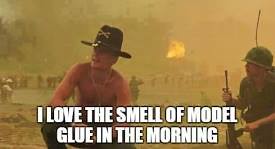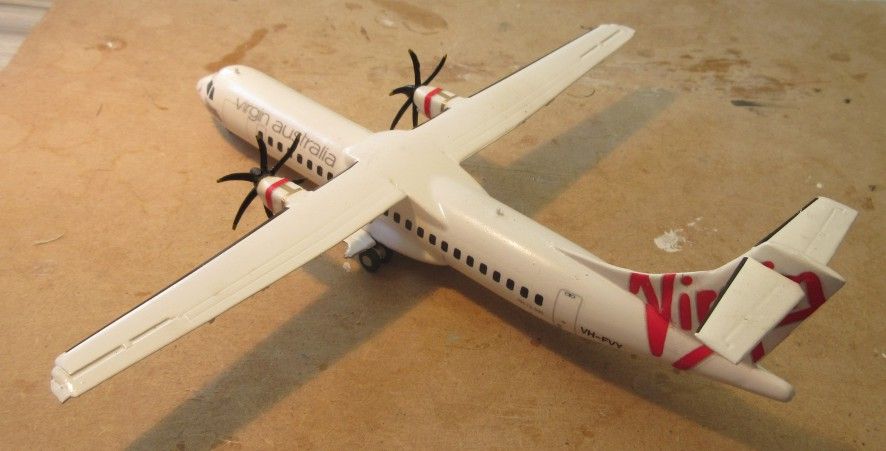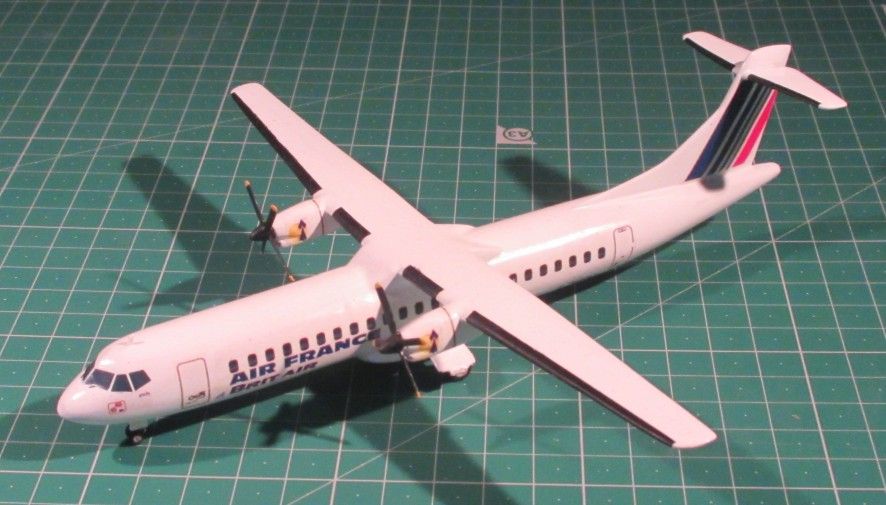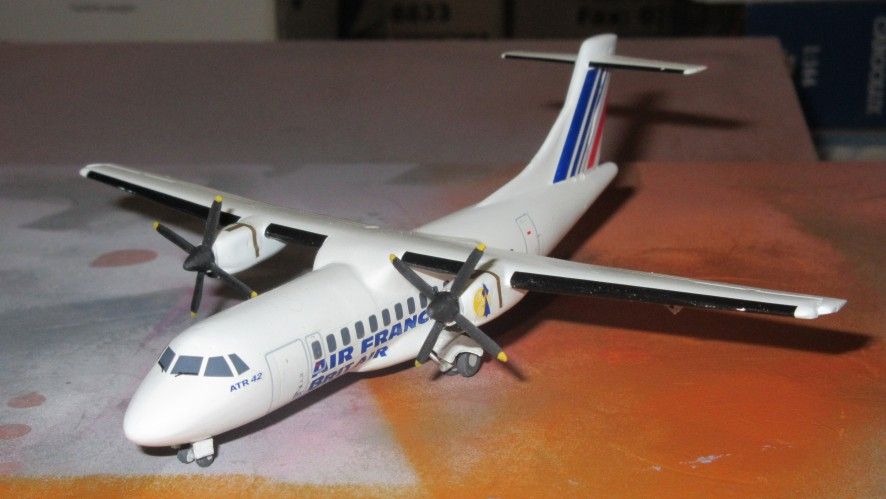
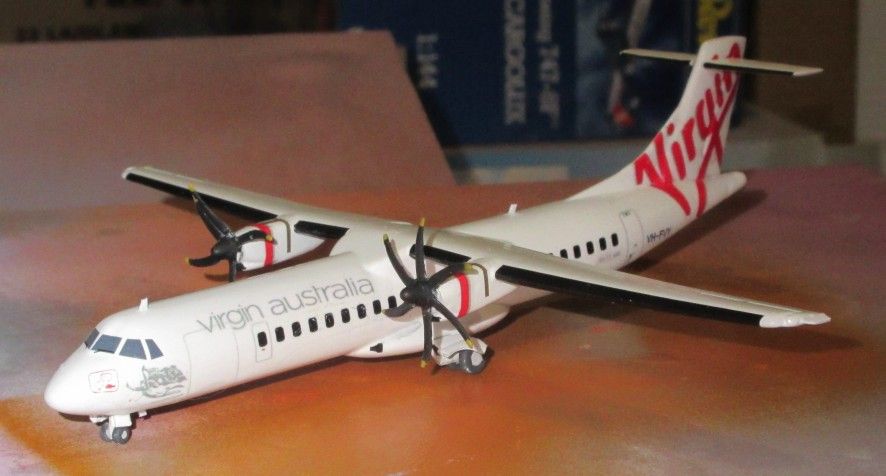
The Avions de Transport Régional is available in kit form from Welsh Models and F-Rsin, in both the ATR42 and ATR72 versions. F-Rsin also offers/offered a resin version of the ATR72 that I made several years ago. In my humble opinion the resin version is the easiest to make but more expensive, of course.
I've probably got the Welsh Models kits around here somewhere but I thought I'd have a go at the F-Rsin plastic kits. Having made their DC-7C kit when it first came out I knew what to expect of these ATR kits, and they lived down to expectations. They have the look and feel of having been formed in the Mach 2 moulding machine. This means these kits do not fall together, in fact they have to be carefully and lovingly turned from not-very-precisely formed parts into useable pieces to urge them to make a decent model. These kits are not as good in quality as some limited run kits, but they are possibly better then vacformed kits so they're really the only show in town and you just have to work with the kit quality.
The moulding is a bit haphazard in places and some of the sabre shaped propeller blades in the ATR72 kit are so badly formed that it was just as well that i also had the ATR42 kit which provided some spares. Some parts are also very fragile and even in the process of taking the photo of the ATR72 to show here two propeller blades disappeared. (This is going to be a real challenge.)
The kits also have the typical post-modern French instruction sheet that is only partly useful. For example, I have no idea how the main undercarriage doors in the kit are supposed to work and did my best by looking at lots of photos of the real thing. The same thing goes for the undercarriage which, so far as I can tell, simply can't be assembled the way the kit suggests. Never mind, there are plenty of photos available on the interweb of these aeroplanes and they generally show you how things should go, despite some of the oddities of the kits.
The decal sheets that come with the kits are excellent and you get quite a few options. For the ATR42 I chose the Brit Air version and for the ATR72 the Air New Zealand version. As it turned out, I came across Ric Warcup who makes a lot of interesting decals including for various Virgin Australia aeroplanes. So I used them instead. The same decal sheet is included in both kits for the de-icing boots, windows and etc and they are very good. However they are also very thin so handling them is a challenge so, after having a few tense moments with the first item I tried, I put a coat of Liquid Decal Film over them just to make them a bit easier to use. I'm sure that the Brit Air decals are about ten percent bigger than they should be. (Later I recalled that I'd had the same problem with the resin ATR72 and had scanned the decals for that kit, reduced them by about ten percent, printed them on decal paper and used them. I should have done the same with the decals for this model. On the other hand, ric warcup's decals proved to be excellent.
Overall, these kits are makeable if you know what you are doing. Even after a decade or so of struggling with kits like these I still found them a lot of hard work. Still, they are the best game in town so, get on with it if you want models of ATRs.

